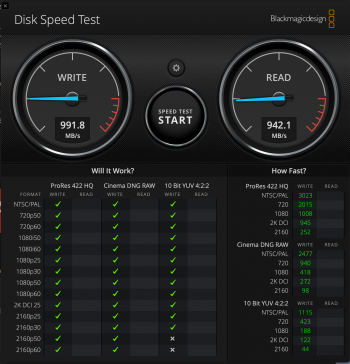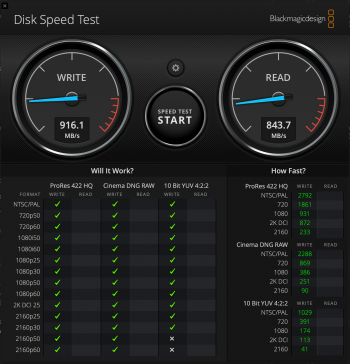I just set my M1 up, I use a T7 for my iTunes library, same 10Gb/s interface for me. However neither T5 or T7 is capable of 10Gb/s speeds. So why care what connection speed is shown?I just plugged in a Samsung T7 to my M1 MBP and it's reporting 10Gb/s
Black magic disk speed test reports ~103 write and ~760 read
"The T5 has a sequential read speed of up to 540 MB per second in addition to a sequential write speed of up to 520 MB per second. The T7 and T7 Touch have a sequential read speed of up to 1,050 MB per second (a 94.44% increase over the T5) and sequential write speed of up to 1,000 MB per second (a 92.31% increase from the T5)."





